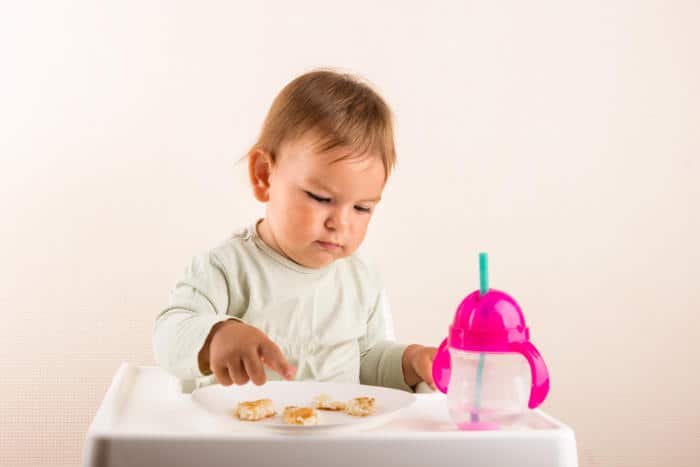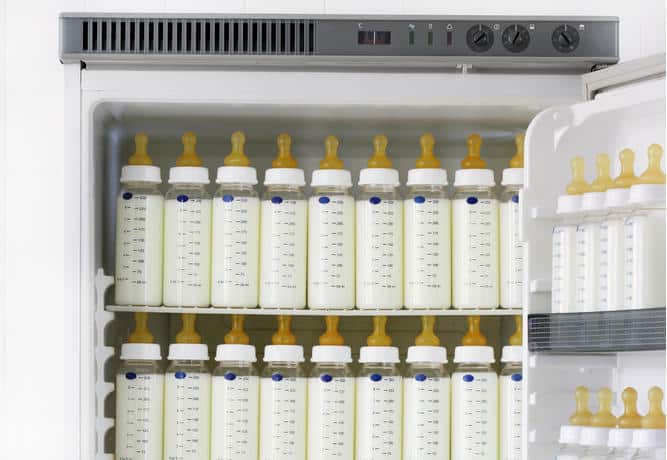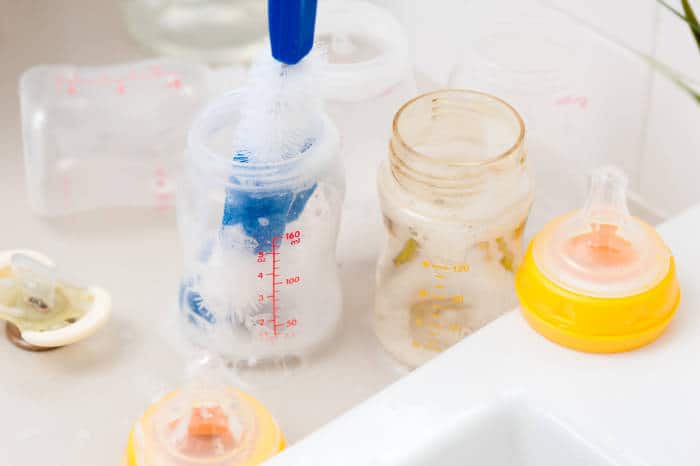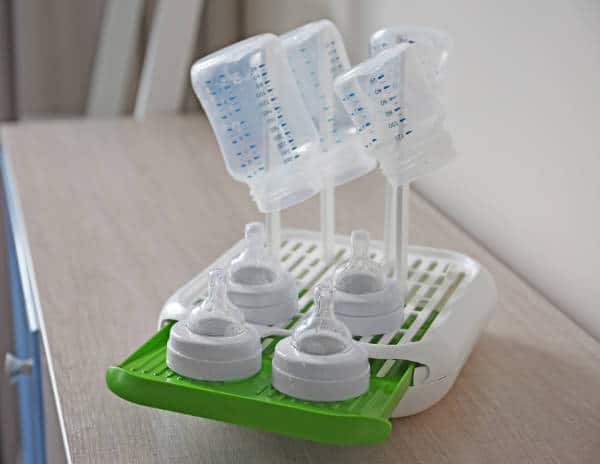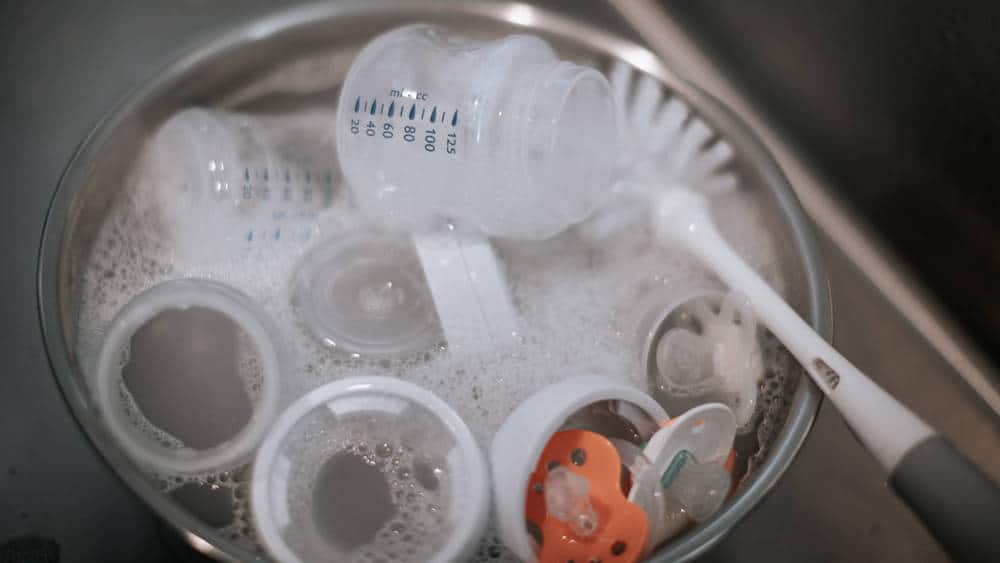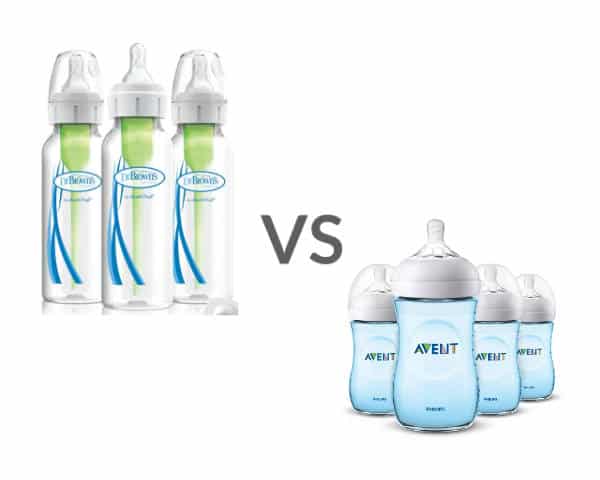
Battle of the Brands
Dr Brown
Dr. Brown’s Bottles are designed and backed by a team of experts. This includes Rebecca Kempton, MD, a pediatric sleep expert, and Sara Dumond, MD, who is the founder of Pediatric Housecalls. Before that, Dr. Brown’s Bottles were invented by Family Practice Physician Craig Brown, MD. He wanted to design a bottle that would help alleviate some of the colic his second son was experiencing. He was crying for hours a day with no relief which led Dr. Brown to drilling holes in old bottles in an attempt to rid the bottles of the air bubbles during feeding.
That was the first prototype of Dr. Brown’s innovative internal vent system that separates air bubbles from the liquid, achieving vacuum free feeding. They also have a “positive pressure design” which is more like breastfeeding than other bottles. Dr. Brown is still a practicing physician and continues to make medical equipment which includes feeding systems for premature infants.
Philips Avent
Created in 1984, the brand Philips Avent was born with a mission to create bottles with a short, wide neck. The endeavor was also spurred by sleepless nights of a new father when the inventor, Edward Atkin’s son also suffered from colic. His design’s broad shape helped mimic nature and came closer to natural nipples than any design before. Additionally, he also utilized an internal venting system to eliminate air bubbles.
This company owns a few other accomplishments including being the first bottle company to use odorless and tasteless silicone for the nipples. In addition to the highly popular event bottles, they also patented advancements in breast pumps, and steam/microwave sterilizers.
Companies Compared
| Dr Brown | Philips | |
|---|---|---|
| Age (Established) | 1996 | 1984 |
| Company Size | Mid-size | Large enterprise |
| Employees | ~266 | ~1000 |
| Product Reach | Worldwide | Worldwide |
| Lawsuits | None worth noting | MEDMARC CASUALTY INSURANCE COMPANY, Plaintiff/Counterclaim Defendant-Appellee, v. AVENT AMERICA, INC., Defendant/Counterclaim Plaintiff-Appellant. (Use of BPA) |
While both bottles are worldwide distributors, Philips Avent is a much larger enterprise. It is part of a much larger corporate family with many subsidiaries. It has one notable lawsuit which involves the use of BPA in its bottles. Dr. Brown’s also used BPA at one point but voluntarily eliminated the compound from its bottles.
Dr Browns vs Avent Bottle Comparison Table
| Dr Browns Original | Dr Browns Options+ | Philips Avent Natural | Philips Avent Anti Colic | |
|---|---|---|---|---|
| Colors | clear | clear | clear, blue, pink, purple, teal, pattern | clear, blue, pink |
| Price Range | $$ | $$ | $$$ | $$ |
| Sizes | 2oz, 4oz, 8oz | 5oz, 9oz | 4oz, 9oz, 11oz | 4oz, 9oz, 11oz |
| Nipple Types available | Preemie, 0m+, 3m+, 6m+, 9m+ | Preemie, 0m+, 3m+, 6m+, 9m+ | preemie, 0m+, 3m+, 6m+ | preemie, 0m+, 3m+, 6m+ |
| Easy to clean | N | N | Y | Y |
| Anti-colic | Y | Y | Y | Y |
Overall, if you are deciding between Dr. Brown vs Avent bottles, you can’t go wrong with either one. These are pretty comparable bottles and work to cut down on colic. However, Dr. Brown’s technology might be a little more cumbersome with issues arising if the bottle falls over. The vent in Dr. Brown’s also makes it more challenging to clean. Meanwhile, Philips Avent baby bottle is a little more expensive, but offers more color selections. Both brands offer a variety of sizes and flows.
In-Depth Look at Dr. Browns & Philips Avent
Dr Brown’s Original Bottles
This award-winning set of Dr. Brown bottles has been a longtime favorite of parents and caregivers. It features an internal vent system that has been clinically shown to reduce colic by removing air when your baby drinks from these Dr. Brown baby bottles.
While it removes air, the vent system also leaves the important balance of vitamins within the milk intact. Unique to Dr. Brown’s, the system creates a positive-pressure flow which is similar to breastfeeding. Additionally, the flow of the nipple mimics the paced milk expression from breastfeeding and allows the infant to drink at a comfortable speed.
These anti colic bottles are also BPA, PVC, and phthalate free. The plastic bottles are designed to fit most breast pumps and the company offers adapters for purchase if they aren’t a good fit. These are compatible with Medela breast pumps.
What we liked:
- Innovative vent system
- Creates positive-pressure flow (vacuum-free)
- Maintains vitamins in milk
- Great for paced feeding
- BPA, PVC, and phthalate free
- Compatible with Medela pumps
- Company offers adapters for breast pumps that don’t work with bottles
What we didn’t:
- The internal vent system can be a little cumbersome to deal with (cleaning/tipping bottle over)
Dr Brown’s Options+ Bottles
This model is a little more adaptable in that you don’t have to use the vent with the bottle, allowing it to grow with your baby. Also, the nipples are very natural and boast around 93% acceptance rate. They’re a great option for breastfeeding babies that are picky when it comes to baby bottles.
This Dr. Brown bottle model features a silicone nipple and BPA-free bottle which is dishwasher/sanitizer-safe. Additionally, like the Original Dr. Brown’s bottle, the Options+ bottle maintains the vitamins and nutrients in the milk. You can also use it with any bottle warmer.
What we liked:
- Features the internal vent system
- You don’t have to use the internal vent system
- Natural nipple shape
- Successful transitions for breastfed babies
- BPA free
- Preserves vitamins and nutrients
What we didn’t:
- Not PVC and phthalate free
Philips Avent Natural Bottles
This set of Avent bottles is also designed to be anti colic. However, it utilizes a valve vent system built into the nipple. Along with a range of flow rates, the nipple is also great because of its wide design. It mimics the size, shape, and flexibility of a real nipple which is great for breastfed babies.
These bottles come in a contoured ergonomic shape, as well as a few neutral colors. They’re simple to disassemble, clean, and reassemble too. Additionally, these bottles are also BPA free. If you prefer glass bottles for breast milk or formula, you can pick up the 240ml with a slow flow teat flow of this Philips Avent bottle model.
What we liked:
- Valve vent system
- Innovative nipple design (wide, soft, flexible
- Ergonomic shape
- Selection of colors
- BPA free
- Easy to clean and reassemble
What we didn’t:
- Valve vent might not eliminate as much air
Philips Avent Anti-Colic Bottles
For this design, Philips Avent pulled out their own version of the internal vent. The design of these Avent baby bottles has empirical data that points to a reduction of colic symptoms. The nipple of these bottles is still on the wider side and allows for a natural latch and reduction in nipple confusion for breastfed babies. The bottle pack also includes a set of slow flow nipples in size 2.
This internal vent is quick and easy to disassemble and clean. It doesn’t require any special tools or brushes, unlike Dr. Brown’s. These also come in a small variety of colors. “80% of moms agreed ‘my baby experienced fewer feeding issues‘, home placement test with 144 US moms, MetrixLab 2017.
What we liked:
- Internal vent system
- Easy to clean
- No special tools
- Wide nipple for natural latching
- They come in a variety of colors
- BPA free
Conclusion
If your baby’s colic is debilitating and upsetting everyone’s life, it might be a good idea to pull out the big guns, aka the internal vent system of Dr. Brown bottles. It’s backed by clinical studies and physicians. The only issue is the complexity of the mechanism and the need for special cleaning tools.
If your baby isn’t crying most of the day and you don’t have the time or patience to clean the tiny parts of a bottle, consider Philips Avent bottles. They use a valve system as well, but it is easier to clean and maintain. Philips may also have the upper hand for babies that are alternating between breastfeeding and bottle-feeding since the nipples mimic the natural shape and flexibility of a nipple.
They are great anti colic baby bottles. So, if your little one is really struggling, it might be worth it to try both (speaking as a parent that’s dealt with colic). Every baby is different after all.




